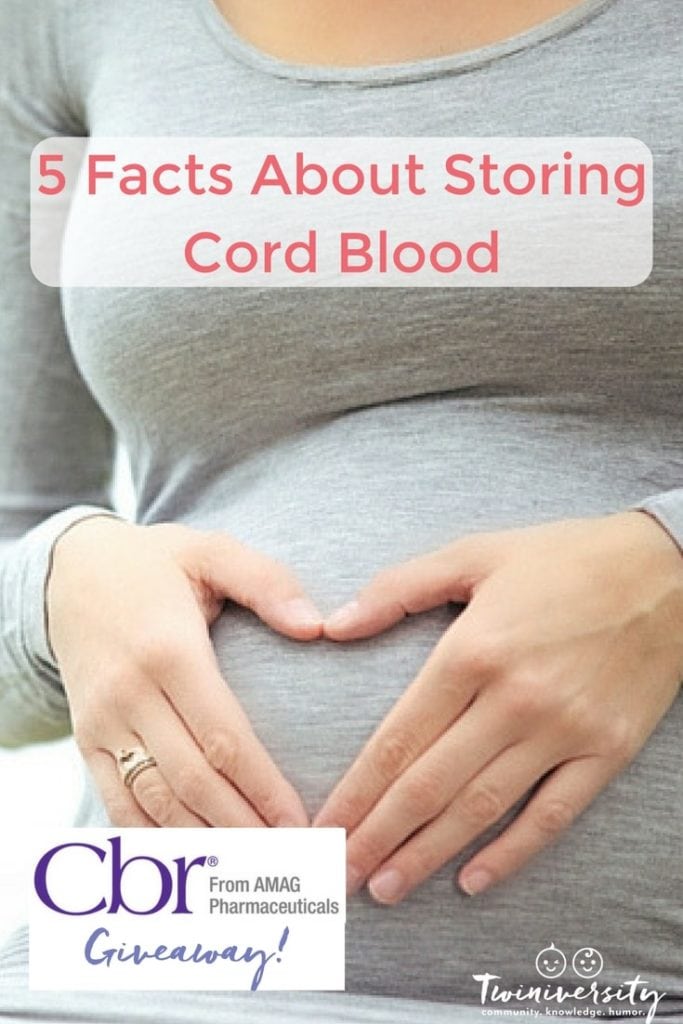Last updated on May 20th, 2024 at 01:46 pm
Hey gang, listen up! We’ve got a great article for you on five facts about storing cord blood, plus one lucky family will win a $100 Amazon gift card, courtesy of CBR®! At Twiniversity, we are huge advocates of storing cord blood. Through the process of cord blood banking, you can save the newborn stem cells found in your babies’ umbilical cords at birth to use if there’s ever a medical need in the future that can be treated with newborn stem cells, such as with certain cancers, blood and immune diseases and some metabolic diseases.
THIS CONTEST IS CLOSED
Our trusted partner, CBR, has the largest family newborn stem cell bank in the world and has been banking babies’ cord blood for over 20 years. CBR partners with research institutions on FDA-regulated clinical trials to help advance newborn stem cell science (we are HUGE fans of science!) and they are the #1 choice of OB/GYNs and expecting parents. Plus, your family may qualify for free banking through CBR’s Newborn Possibilities Program®, where families with a qualifying medical need can receive free cord blood processing and five years of storage for cord blood and cord tissue.
When you’re pregnant with twins, pondering the lives growing inside of you, you are mainly focused on a healthy pregnancy and the successful birth of your little ones. The last thing you’re thinking about is, “What if my child contracts a disease down the road?” Cleary, it’s not a pleasant topic to think about. While you can’t prevent many health complications from happening, you can be prepared with something that’s available only once in your babies’ lifetime: cord blood stem cells. By combining the miracle of childbirth with science, you may get peace of mind by storing your babies’ newborn stem cells.
What Is Cord Blood and Cord Blood Banking?
Cord blood is the blood remaining in the umbilical cord and placenta once babies are born. Cord blood is enriched with stem cells that are being researched for ways that can heal the body and promote recovery. They offer an enormous amount of therapeutic potential.
If you are having a singleton, you have the option of privately banking or publicly donating cord blood. Public cord blood banking means that your baby’s cord blood will be donated to a facility for the general public to use for treatments, typically at no cost to the family. However, you will not have control over the use of that cord blood and it won’t be reserved for your family should they need to use it in the future. Private cord blood banking refers to storing cord blood exclusively for the potential use of your 1st and 2nd degree family members. Please note that if you are having multiples you cannot bank publicly. According to the National Marrow Donor Program, “Public cord blood banks can only accept donations when one baby is expected. With twins, each umbilical cord has different tissue types and it’s possible the two cord blood units could be mixed up during collection.”

If you sign up to privately store cord blood, you’ll receive two collection kits (one for each twin) to bring to the hospital when you’re ready to give birth. Whether you deliver naturally or via c-section, cord blood is collected immediately after birth and transported to a processing facility by a dedicated medical courier.
5 Facts About Storing Cord Blood
- Stem cells from cord blood are currently being used in treatments: Cord blood has been used in the treatment of over 80 diseases, including leukemia, anemia, lymphomas, and metabolic disorders. Stem cells can be used to regenerate healthy blood and immune systems after they are damaged by certain diseases or when a patient has certain inherited disorders, such as sickle cell anemia.
- Family advantage: Newborn stem cells have potential to benefit the baby, or 1st or 2nd degree family member. In certain transplant medicine settings, using stem cells from a well-matched family member (vs. an unrelated donor) may improve outcomes with fewer complications.
- No risk during collection: Cord blood collection is safe and painless for you and your baby. Cord blood is collected after the umbilical cord is cut. Your healthcare provider does not need to alter the normal birthing process in any way.
- Potential use in regenerative medicine: While not yet proven effective, cord blood is being investigated in FDA-regulated clinical trials as a potential treatment option for conditions such as autism, acquired hearing loss, cerebral palsy, and pediatric stroke.
- You can also bank umbilical cord tissue: A newborn’s umbilical cord tissue is rich in a different kind of stem cell than is found in cord blood. While there are no current uses for cord tissue cells, they are being evaluated in 30+ clinical trials outside of the US for their potential use in treating heart disease, stroke, and spinal cord damage, among others.
How Do You Store Cord Blood?
Talk to your obstetrician about your desire to bank cord blood. Once you find a cord blood family bank you like, place a call or go online to sign up and they will ship you kits in the mail to bring with you to the hospital for your twins. Make sure you fully understand the fees associated when you call. There is typically an initial processing and transport fee and an annual storage fee. Some banks offer payment plans and gifting options for family and friends to contribute, and some banks offer a free year of storage when you refer a friend who also signs up to bank.

I hope that this information has helped you understand more about storing cord blood and its benefits for your baby and your family.
Cord tissue use is still in early research stages, and there is no guarantee that treatments using cord tissue will be available in the future. Should such use become available, cord tissue will require additional processing prior to use. CBR® is currently evaluating the potential to isolate and prepare multiple cell types from cryopreserved cord tissue for potential future use.
Cbr Systems, Inc.’s activities for New York residents are limited to collection of umbilical cord tissue and long-term storage of umbilical cord-derived stem cells. Cbr Systems, Inc.’s possession of a New York State license for such collection and long-term storage does not indicate approval or endorsement of possible future uses or future suitability of these cells.
Related Articles
- Birth Plans: Good Planning or Micro-Managing The Unpredictable
- Twin Pregnancy Stories to Get You Ready For Delivery Day
- 10 Things To Do Before Delivery Day
THIS CONTEST IS CLOSED









